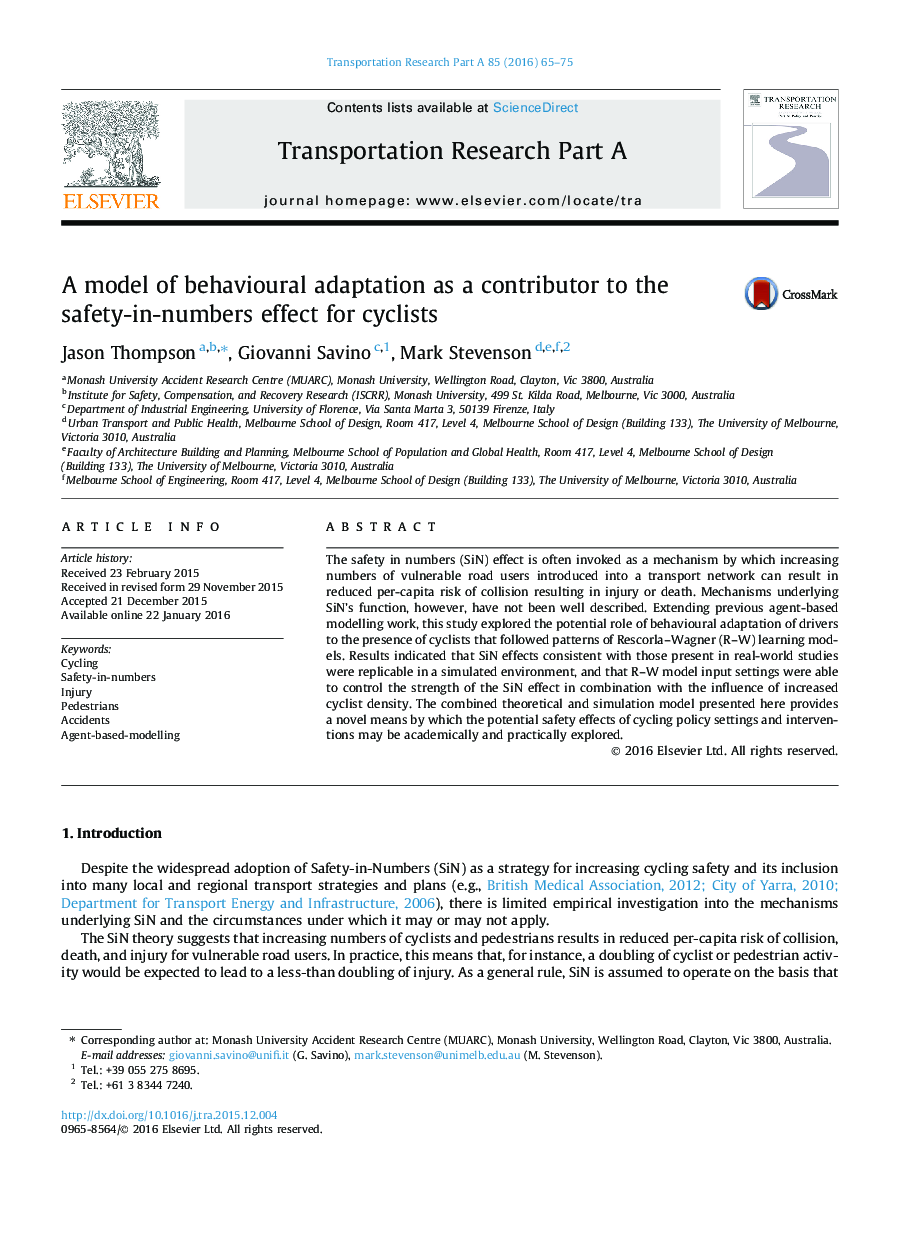| Article ID | Journal | Published Year | Pages | File Type |
|---|---|---|---|---|
| 311123 | Transportation Research Part A: Policy and Practice | 2016 | 11 Pages |
•Agent-based modelling was used to explore mechanisms underlying ‘safety in numbers’ (SiN).•We offer ‘candidate’ mechanisms to explain the SiN effect comprising six factors.•Aspects of our model accord with principles consistent with behavioural adaptation hypotheses.•SiN may be a latent phenomenon, comprised of multiple factors both behavioural and spatial.•These factors can be targeted by transportation policy-makers and planners to improve safety.
The safety in numbers (SiN) effect is often invoked as a mechanism by which increasing numbers of vulnerable road users introduced into a transport network can result in reduced per-capita risk of collision resulting in injury or death. Mechanisms underlying SiN’s function, however, have not been well described. Extending previous agent-based modelling work, this study explored the potential role of behavioural adaptation of drivers to the presence of cyclists that followed patterns of Rescorla–Wagner (R–W) learning models. Results indicated that SiN effects consistent with those present in real-world studies were replicable in a simulated environment, and that R–W model input settings were able to control the strength of the SiN effect in combination with the influence of increased cyclist density. The combined theoretical and simulation model presented here provides a novel means by which the potential safety effects of cycling policy settings and interventions may be academically and practically explored.
